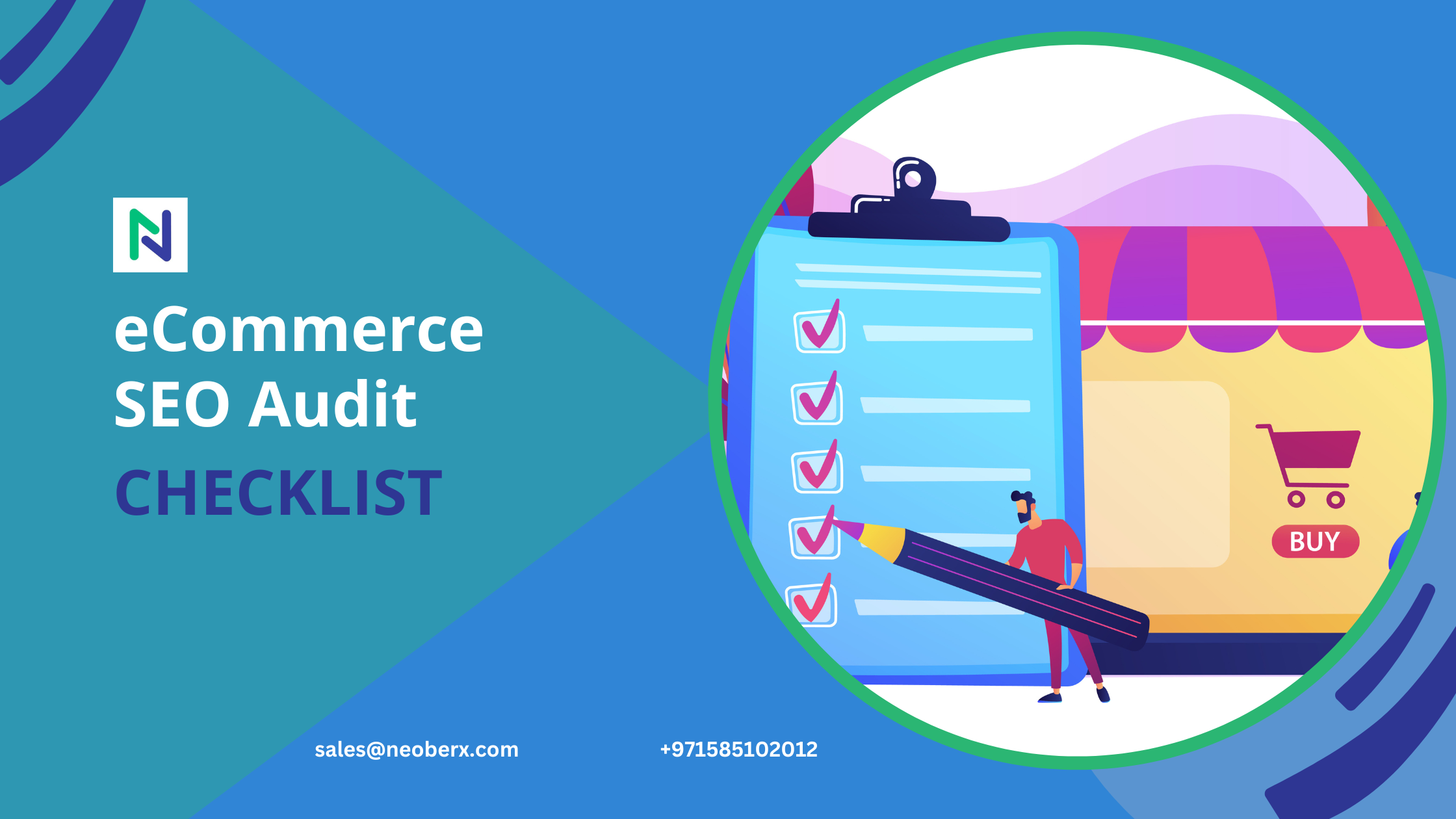In the world of online shopping, a company’s ability to be discovered by search engines is critical to its success. Before developing a strong SEO strategy, a thorough audit is required to identify areas that need to be improved. This comprehensive SEO audit checklist guide provides a step-by-step list for improving your online store’s visibility and optimization while making the process more manageable.
Understanding the Importance of SEO Audits for E-commerce
What is an SEO Audit?
An SEO audit is a comprehensive assessment of your website’s search engine optimization status. This entails thoroughly examining a variety of components, including off-page elements, on-page content, and technical setups. This process allows you to identify underlying issues with your website that may affect how search engines see and rank it.
Why are SEO audits necessary for online retailers?
SEO audits are crucial for e-commerce websites. They ensure that users have a smooth experience and that potential customers can easily find what they are looking for. Frequent audits are required to maintain and improve search rankings, which eventually increase traffic and earnings.

Schedule a Free SEO Audit and Uncover Hidden Opportunities.
Planning for the Pre-Audit Phase
Establishing Specific Goals
Before beginning an SEO audit, clear objectives must be established. Having specific goals makes the audit process go more smoothly and keeps the focus on the important areas, such as increasing mobile usability, organic traffic, and website loading speed.
Obtaining Essential Resources and Tools
Access to specialized tools and resources is required for efficient SEO audits. Investing in reputable SEO platforms like Ahrefs or SEMrush, as well as utilizing Google Analytics and Search Console, is essential. These tools assist in identifying problems and provide invaluable information about website performance and functionality.
Technical SEO Audit Checklist.
Website functionality and speed
The user experience and search engine optimization of a website both depend on its speed. Pages that load slowly may have increased bounce rates and decreased search engine rankings. To assess the performance of your website and pinpoint areas for development, such as browser caching or image optimization, use tools like Google PageSpeed Insights.
Compatibility for Mobile Devices
With so many people accessing websites through mobile devices, it is imperative that you make sure your website is responsive. To determine whether your website is mobile-friendly and what needs to be changed to enhance user experience, you can use Google’s Mobile-Friendly Test tool.
Establishing SSL (Secure Sockets Layer)
Search engine rankings are heavily influenced by security. SSL (Secure Sockets Layer) encryption can increase security by encrypting data transferred between users and your website. Verify that your website is set up correctly and has an SSL certificate in order to boost credibility and prevent security alerts.
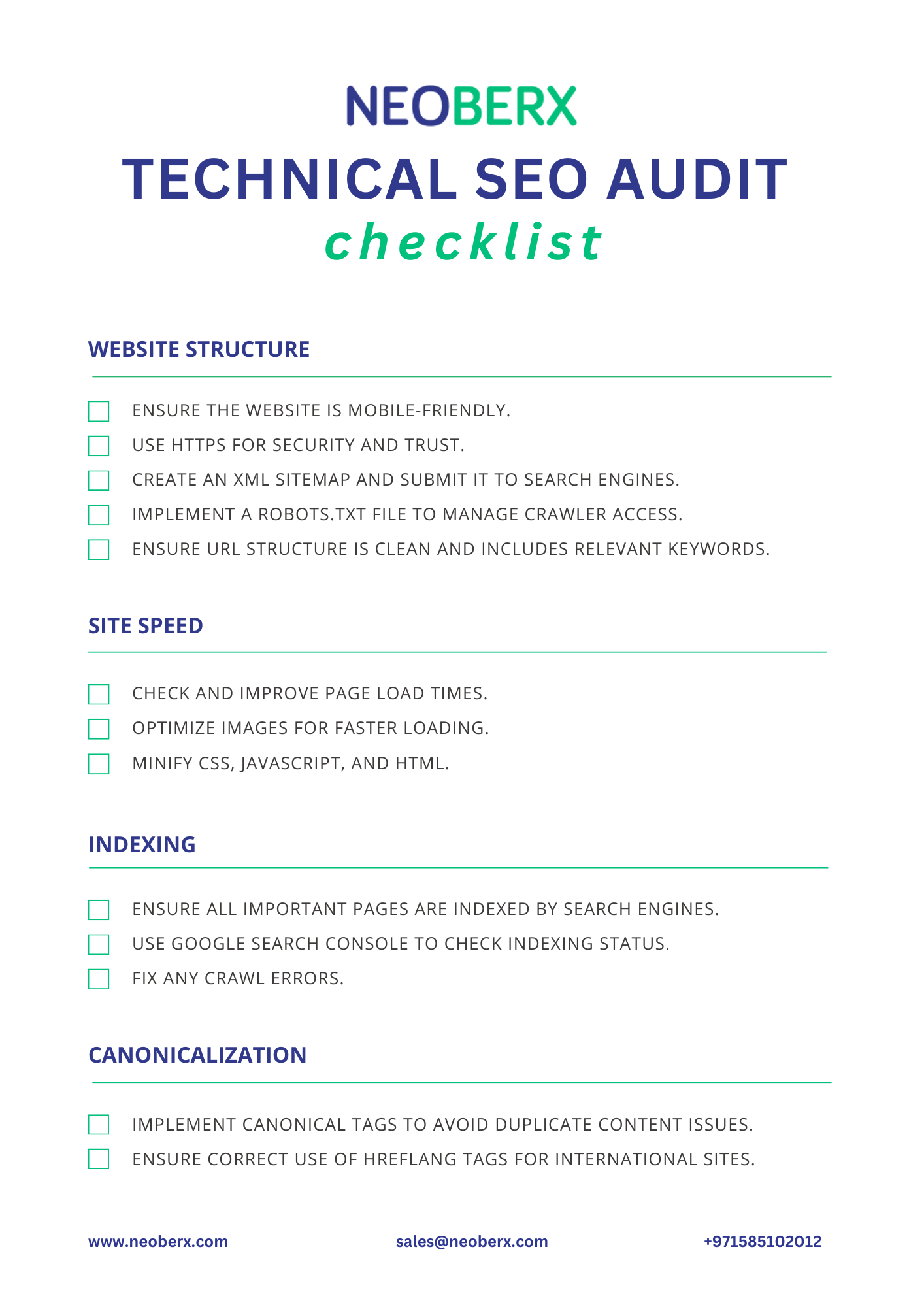
An On-Page SEO Audit Checklist
Analyzing and Optimizing Keywords
An essential part of on-page SEO is conducting efficient keyword research. Choose relevant search terms that your target audience uses, and then naturally incorporate them into your writing. Finding important keywords with a high search volume and little competition can be aided by using tools like Moz Keyword Explorer and Google Keyword Planner.
Descriptions and Meta Tags
In order to get clicks from search engine results pages, meta tags and descriptions are essential. Make sure your site’s title tags and meta descriptions are distinct and informative for every page. Primary keywords and a concise synopsis of the page’s content should be included in these to entice visitors to click through.
Relevance and Quality of Content
The success of SEO depends on relevant, high-quality content. Continually add new, educational content to your website that speaks to the interests and needs of your visitors. Make your content easier to read and more engaging by using headings, bullet points, and images. This will increase user experience and dwell time.
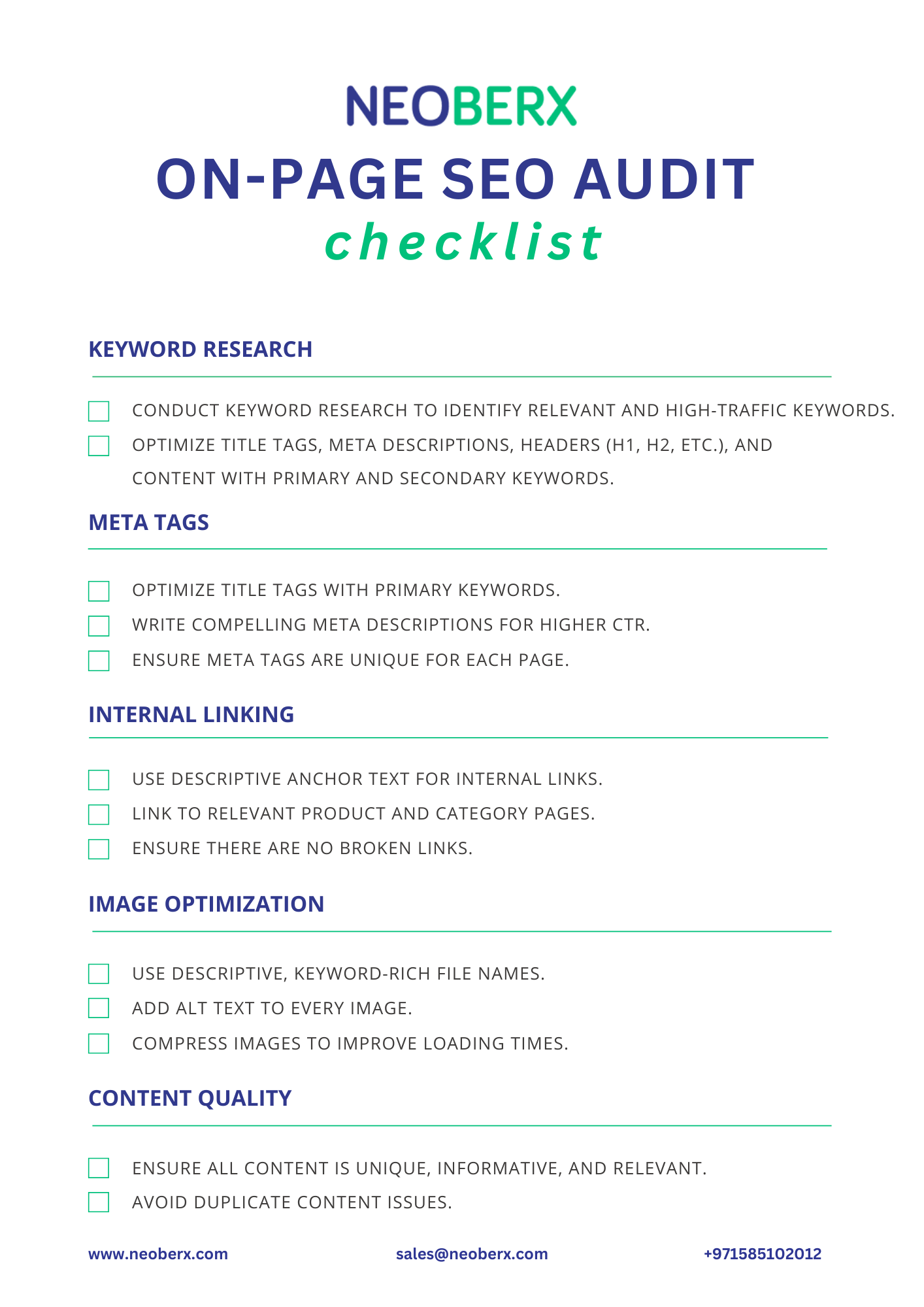
Checklist for Off-Page SEO Audit
Analysis of Backlink Profiles
Search engines can determine your site’s authority and trustworthiness by looking at backlinks from reliable websites. Analyze your backlink profile using tools such as Ahrefs or Moz, find high-quality backlinks, and disavow any bad links that might hurt your rankings.
Integration of Social Media
Your social media presence has a big impact on how well you perform in search engines. Make sure your social media profiles and e-commerce website are linked. Promote the social media sharing of your content to raise its profile and draw possible backlinks, which will enhance website traffic.
Citations and Brand Mentions
Links to and mentions of your brand on the internet can increase the authority and relevancy of your website. Use tools like Google Alerts or Mention to keep an eye out for mentions of your brand. To boost local SEO, make sure that your company name, address, and phone number appear consistently in all online directories and citations.
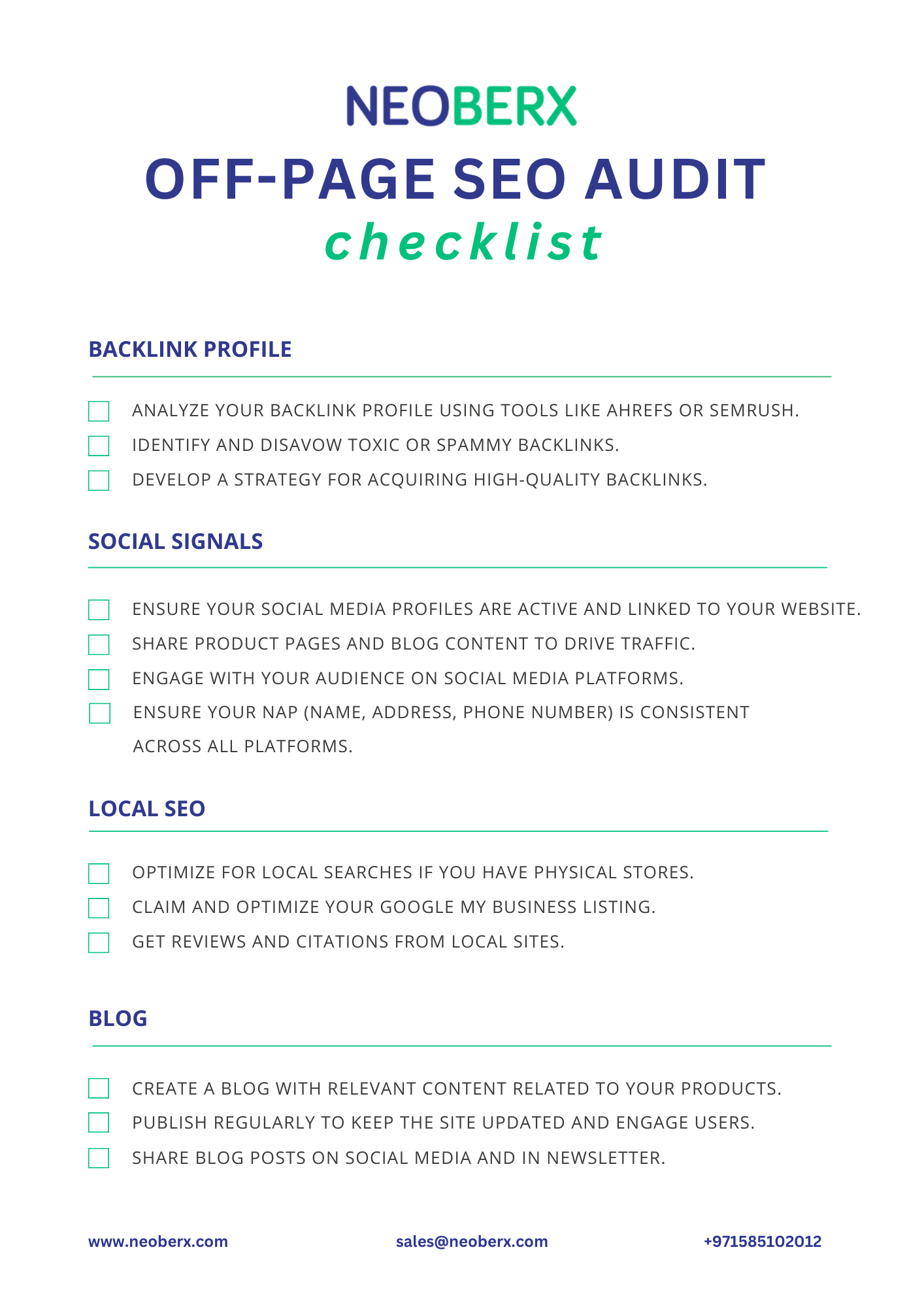
Conversion Rate Optimization and User Experience
Site architecture and navigational structure
Both users and search engines find navigating a well-structured website easier. Make sure the categories and subcategories on your website make sense and are organized in an easy-to-use manner. Improve the site’s overall SEO and assist users in finding related content by using internal linking.
Checkout Process Efficiency
Conversion rates can be greatly impacted by an effective checkout procedure. Simplify your checkout procedure by cutting down on steps, providing a variety of payment methods, and making sure it is safe and easy to use. A smooth checkout process boosts revenue and decreases cart abandonment.
User Engagement Metrics
Keeping an eye on metrics related to user engagement, like bounce rate, average session length, and pages per session, can give you valuable insights into how users interact with your website. With the help of this data, make adjustments that will improve user experience and increase visitor engagement.
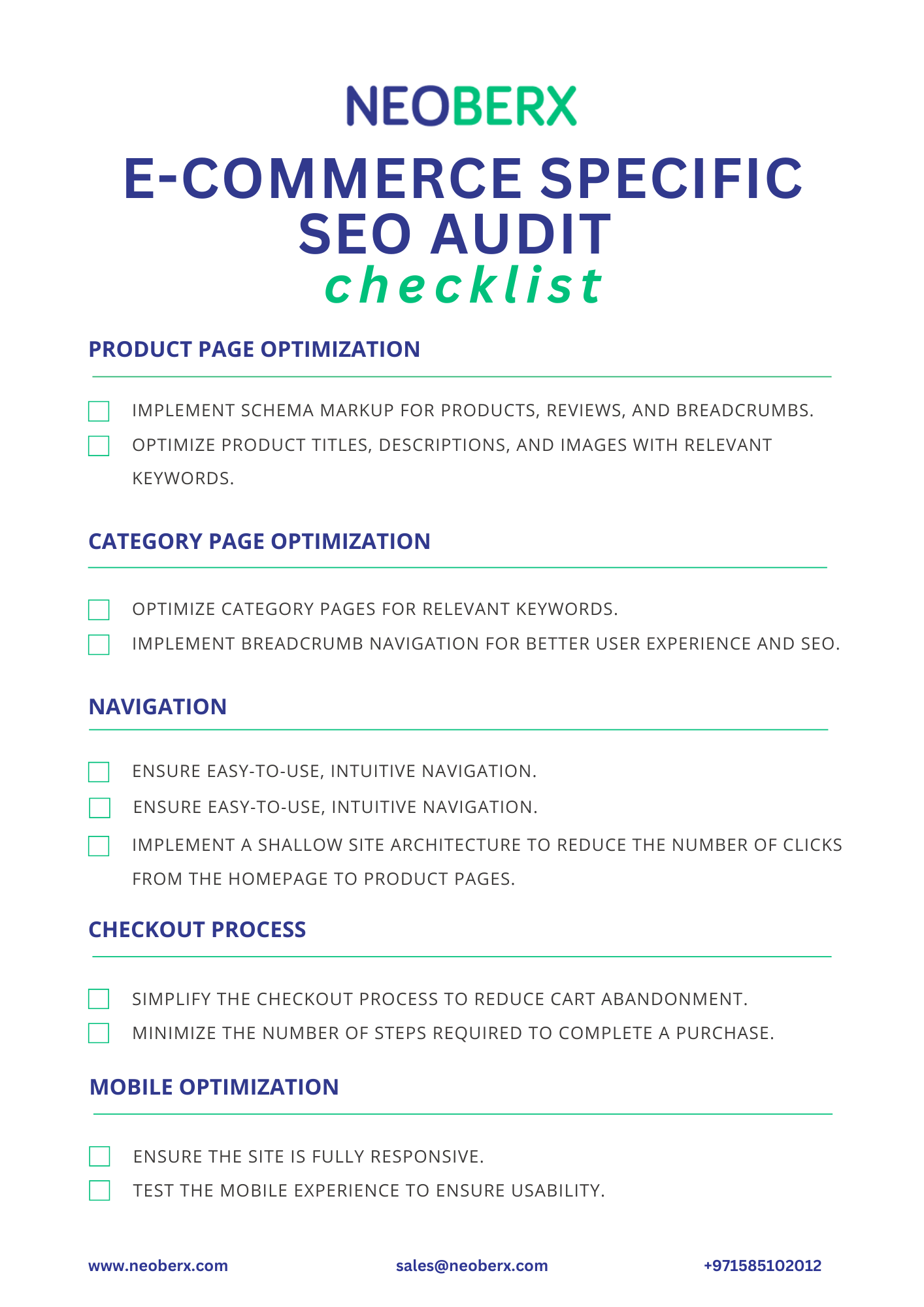
Final Review and Continuous Improvement
Analyzing Audit Results
Analyze the outcomes of your SEO audit to pinpoint the most important areas that still need work. Make an action plan to address issues and prioritize them based on how they could affect the performance of your website. Your SEO strategy will continue to work if you regularly review the audit results.
Implementing Changes and Monitoring Progress
Apply the required adjustments to optimize your website after you have determined which areas need work. Utilize programs such as Google Analytics to track how these modifications affect the functionality of your website. To sustain and raise your search engine rankings over time, you must make constant checks and adjustments.
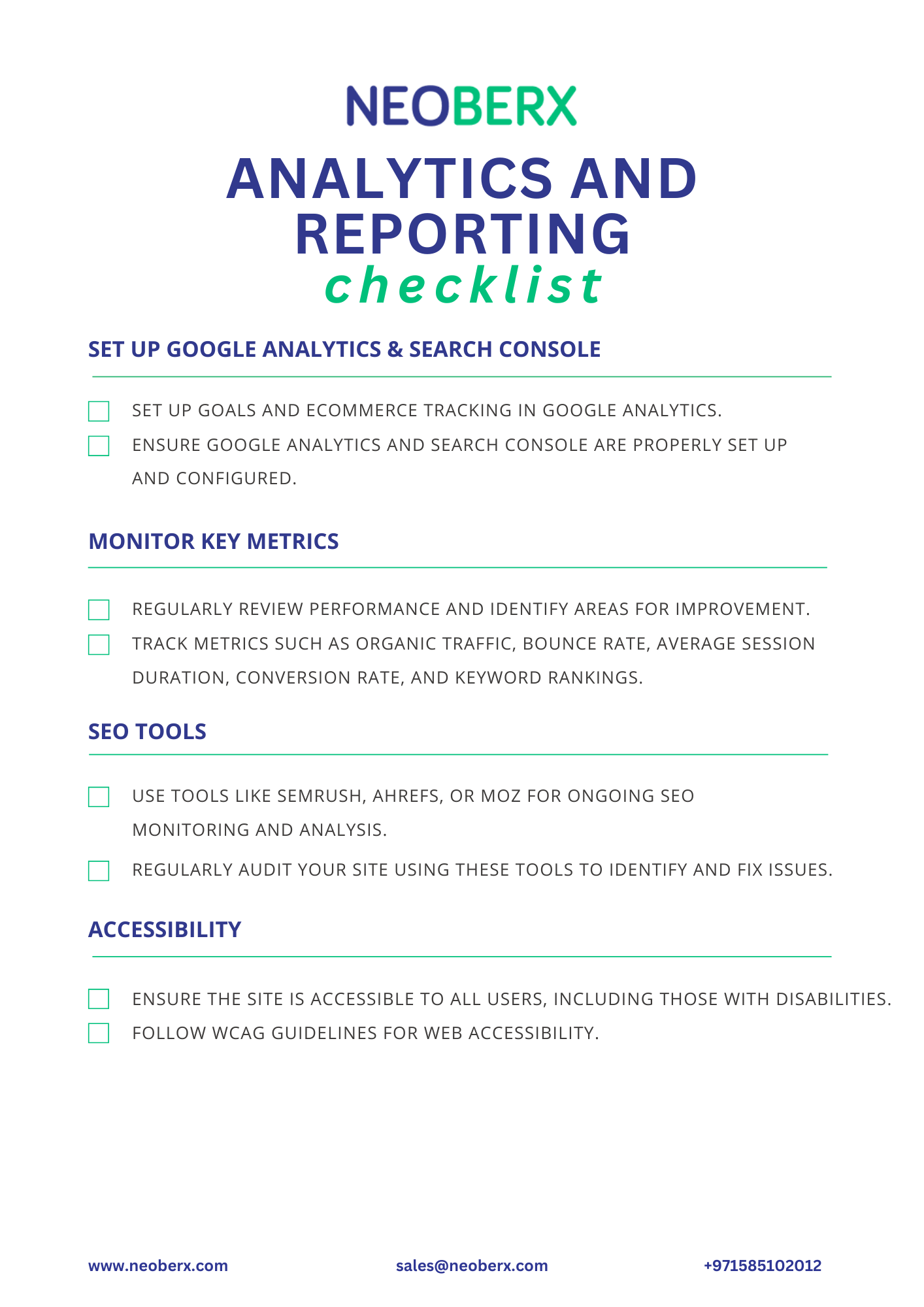
By following this comprehensive ecommerce SEO audit checklist, you can enhance your website’s performance, attract more organic traffic, and ultimately drive more sales. Regular SEO audits and continuous optimization are key to staying ahead in the competitive ecommerce landscape.

Optimize Your Store with a Detailed SEO Audit Report.


